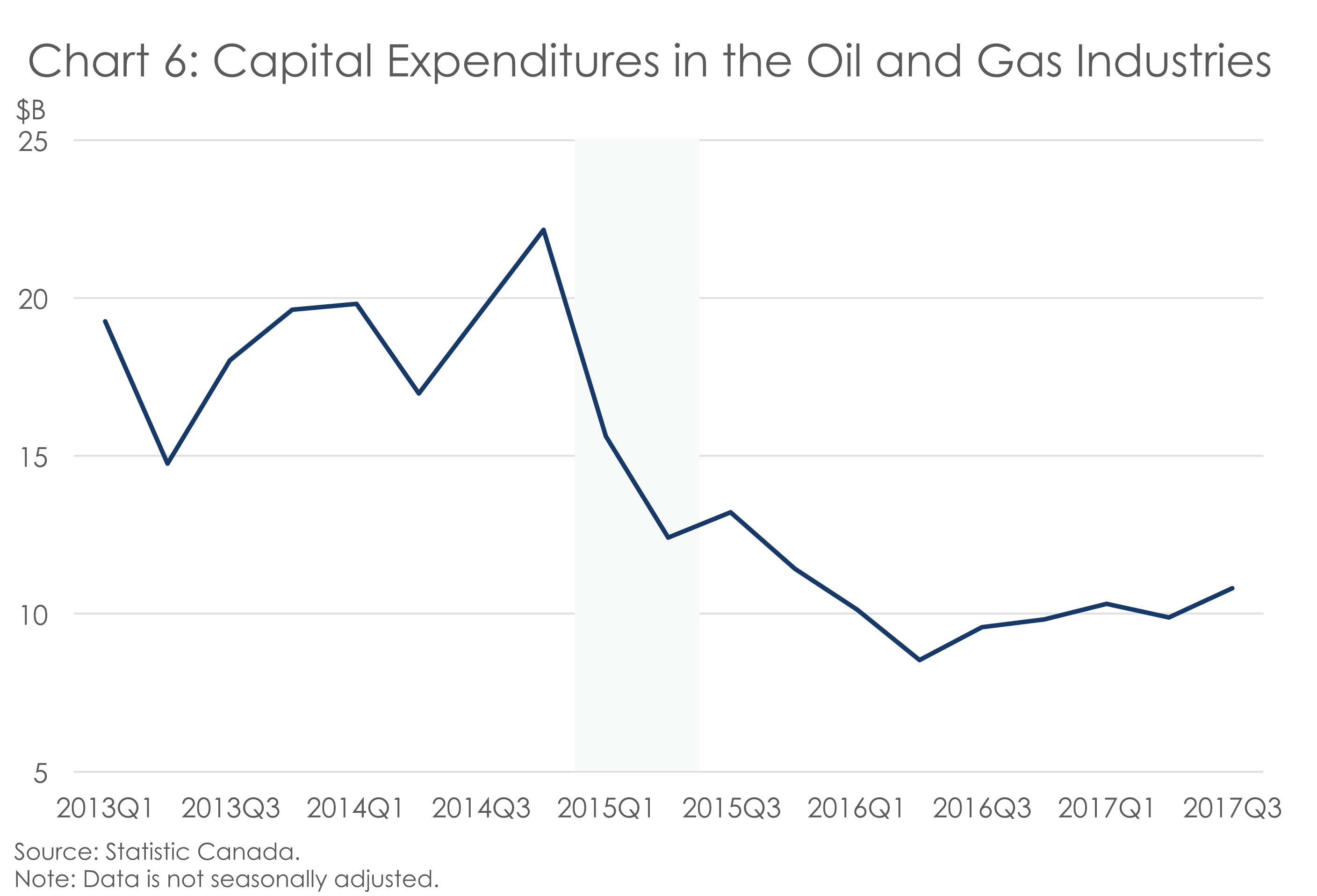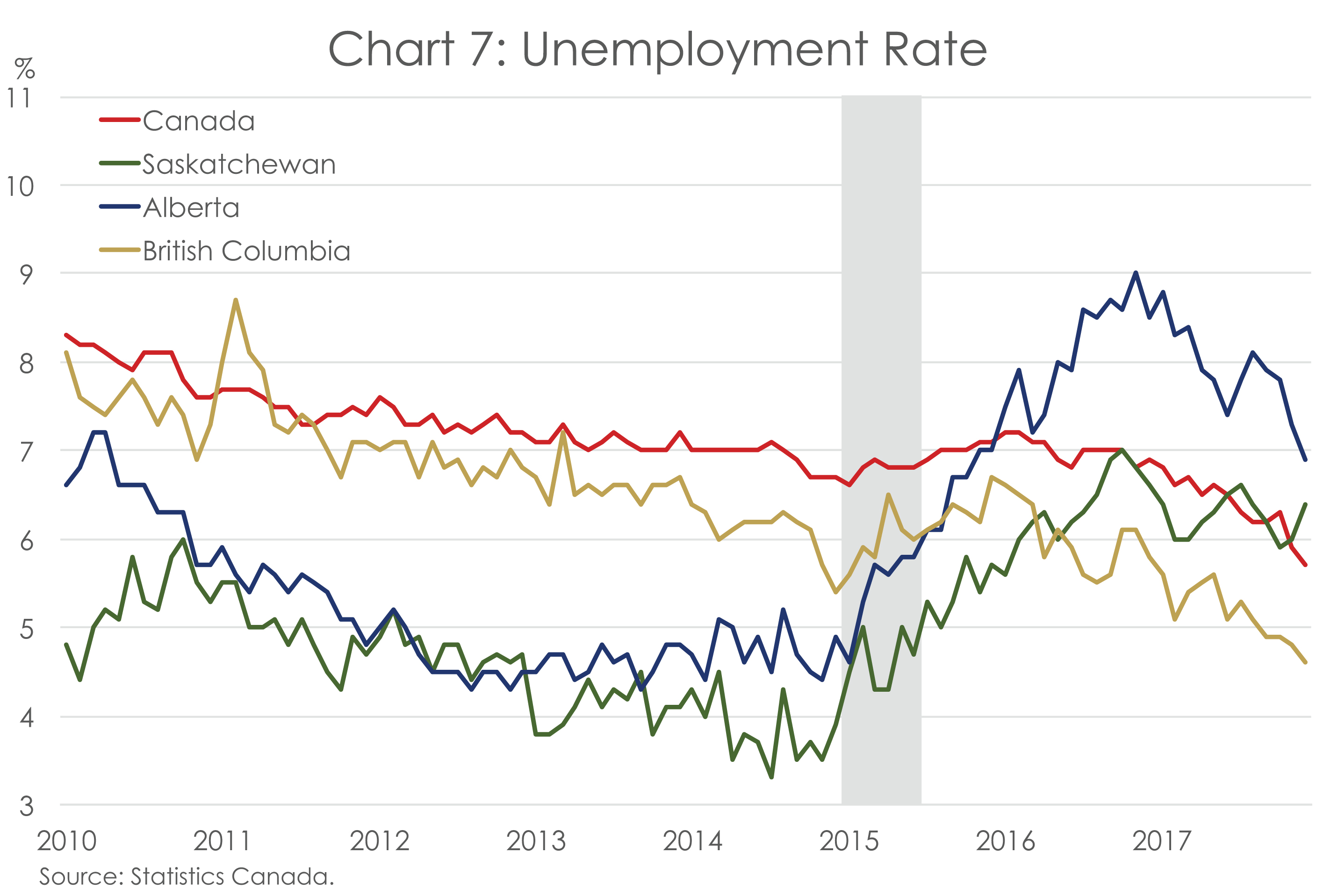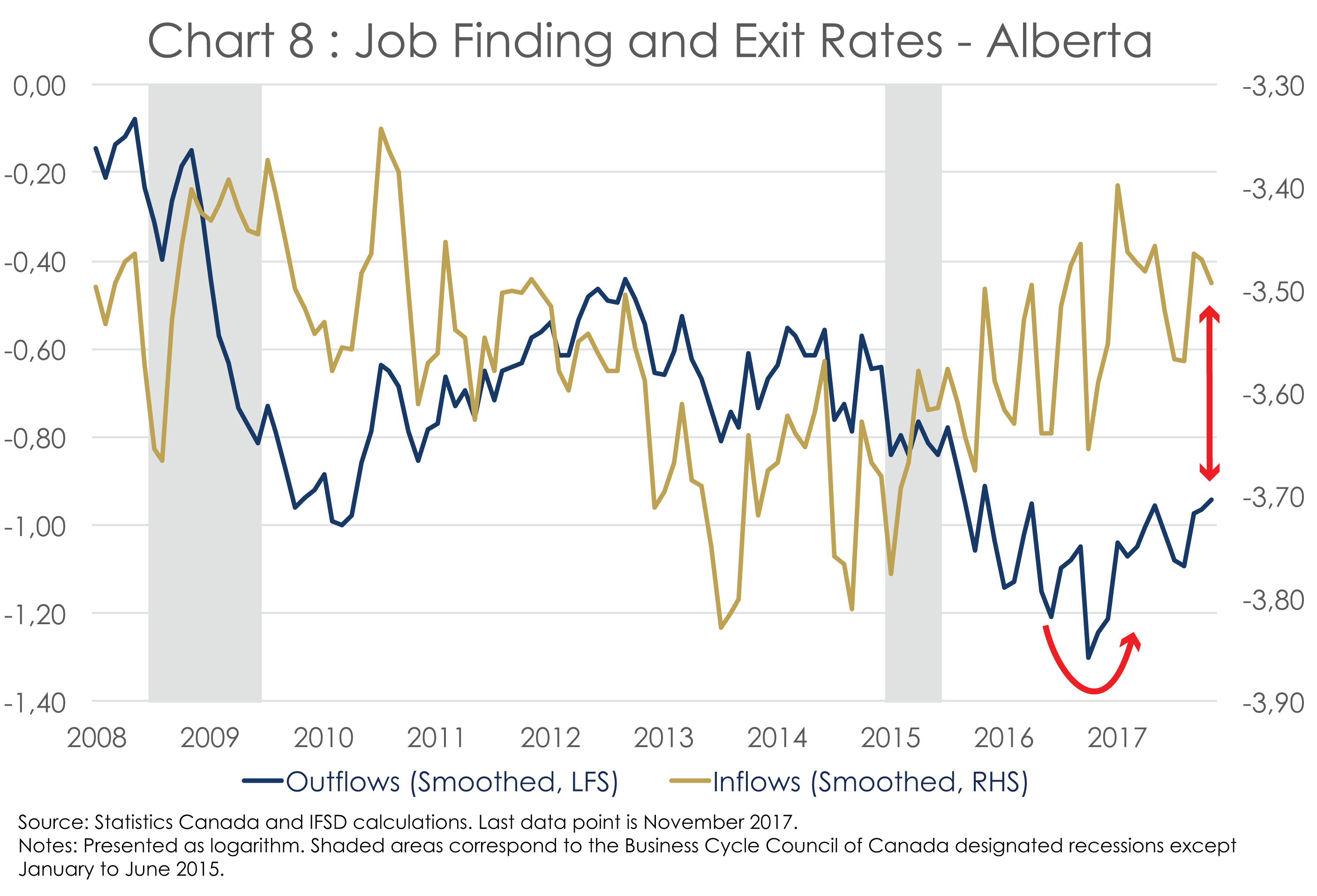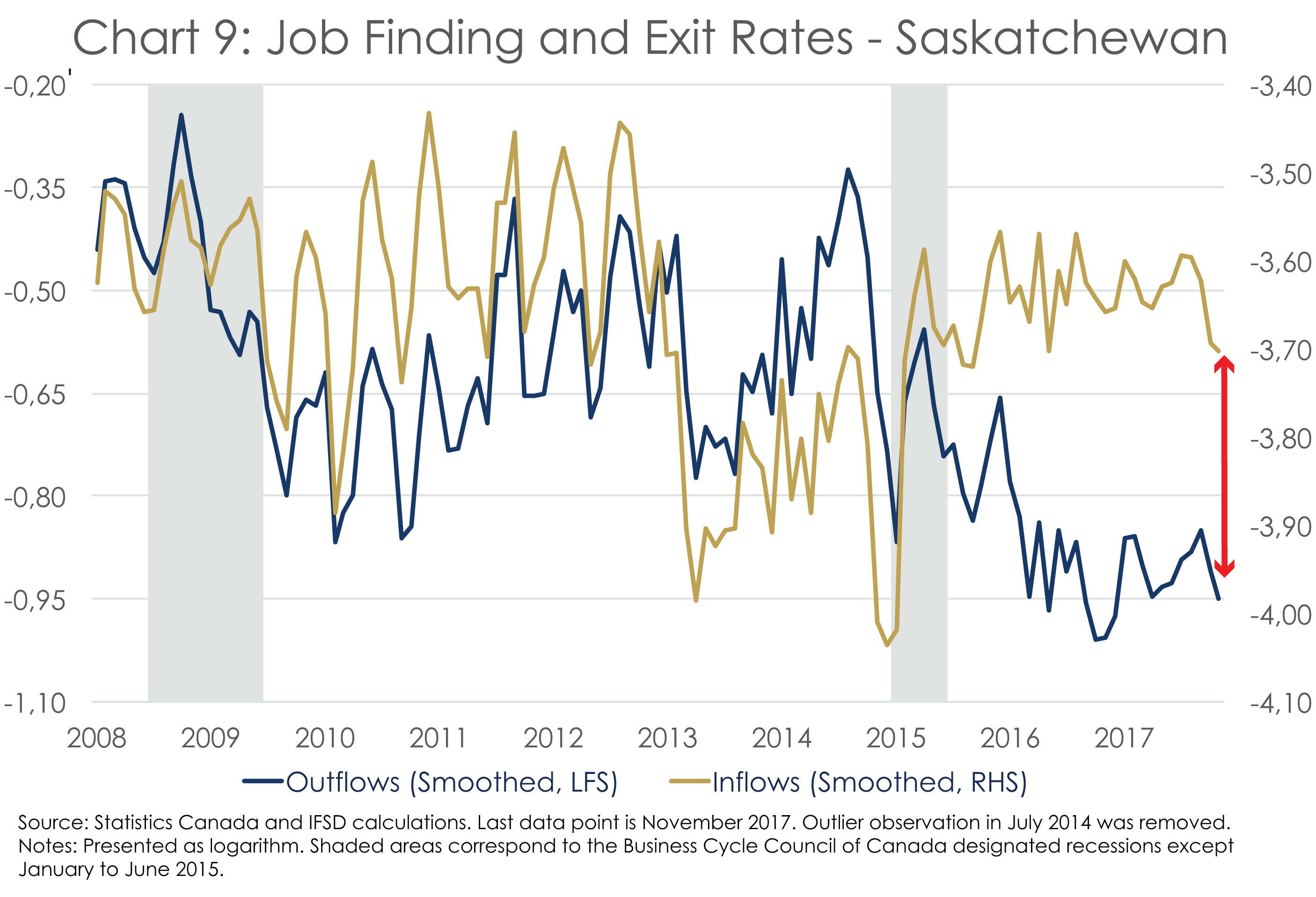by Dominique Lapointe
Following the release of Statistics Canada’s December 2017 Labour Force Survey (LFS), the Institute of Fiscal Studies and Democracy (IFSD) has updated its Canada JØLTS analysis for November 2017.
Economic Implications
In November 2017, the unemployment outflow rate, the “speed” at which unemployed people find a job, decreased by 15% and the inflow rate, the “speed” at which employed people lose or quit their job and go unemployed, decreased by 17%. As the drop in the inflow rate more than offset the drop in the outflow rate, the overall unemployment rate in Canada fell in November, from 6.3% to 5.9% (and then fell again to 5.7% in December).
The Canada JØLTS for November are consistent with an economy running at full capacity. The three-month moving average of unemployment outflows are still firmly trending up while the unemployment inflows are trending down (Chart 1). The gap between inflows and outflows supports the idea that the labour market in the country is tight, with firms having increasing difficulty to fill in positions.
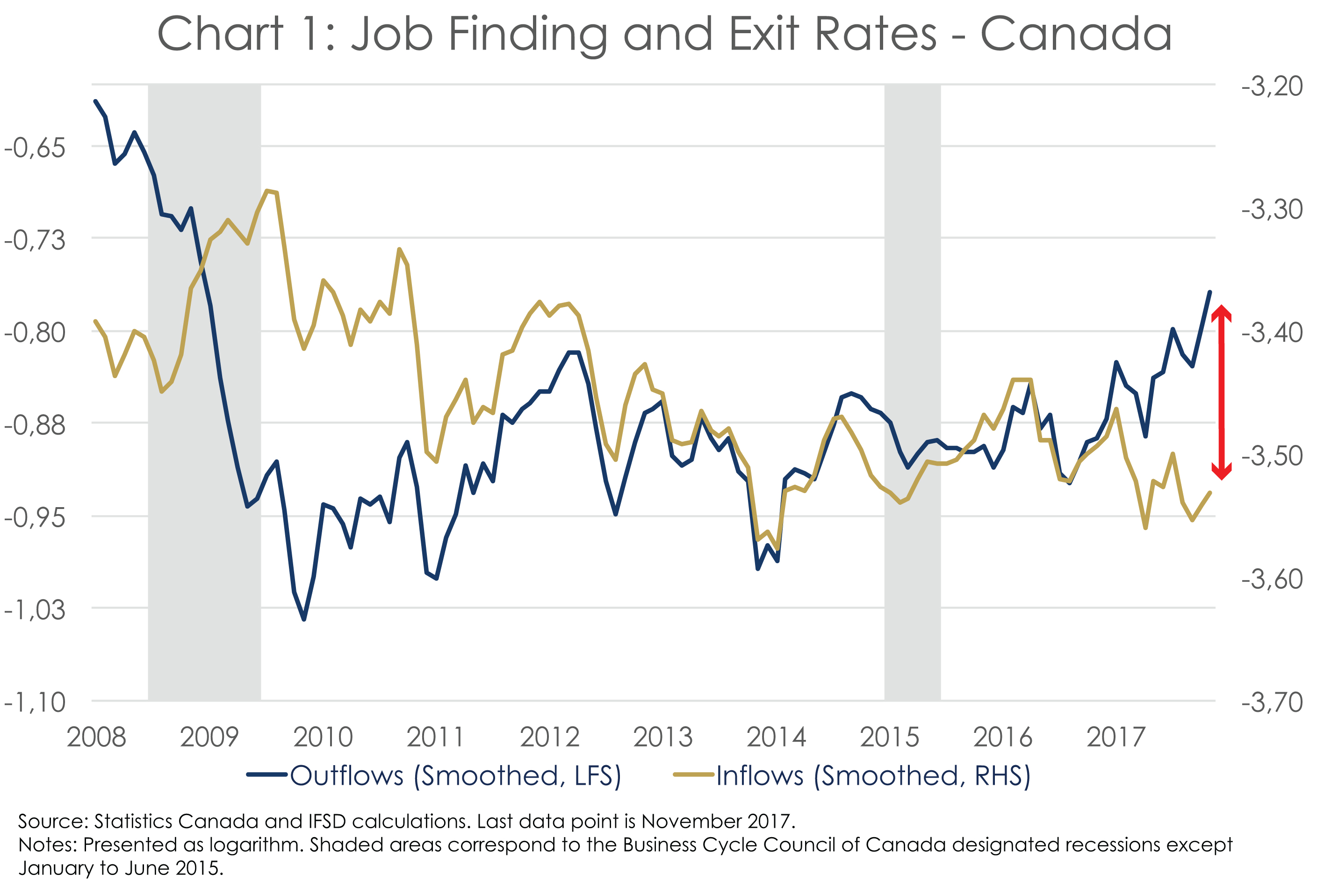
Indeed, the latest Business Outlook Survey conducted by the Bank of Canada reports that, in 2017Q4, 46% of firms faced more intense labour shortages, limiting their ability to meet demand. That’s just slightly short of the record 48% registered in 2007Q1. Adding to this, last quarter, there were 40% more firms expecting to hire over the next twelve months than there were firms expecting a smaller payroll.
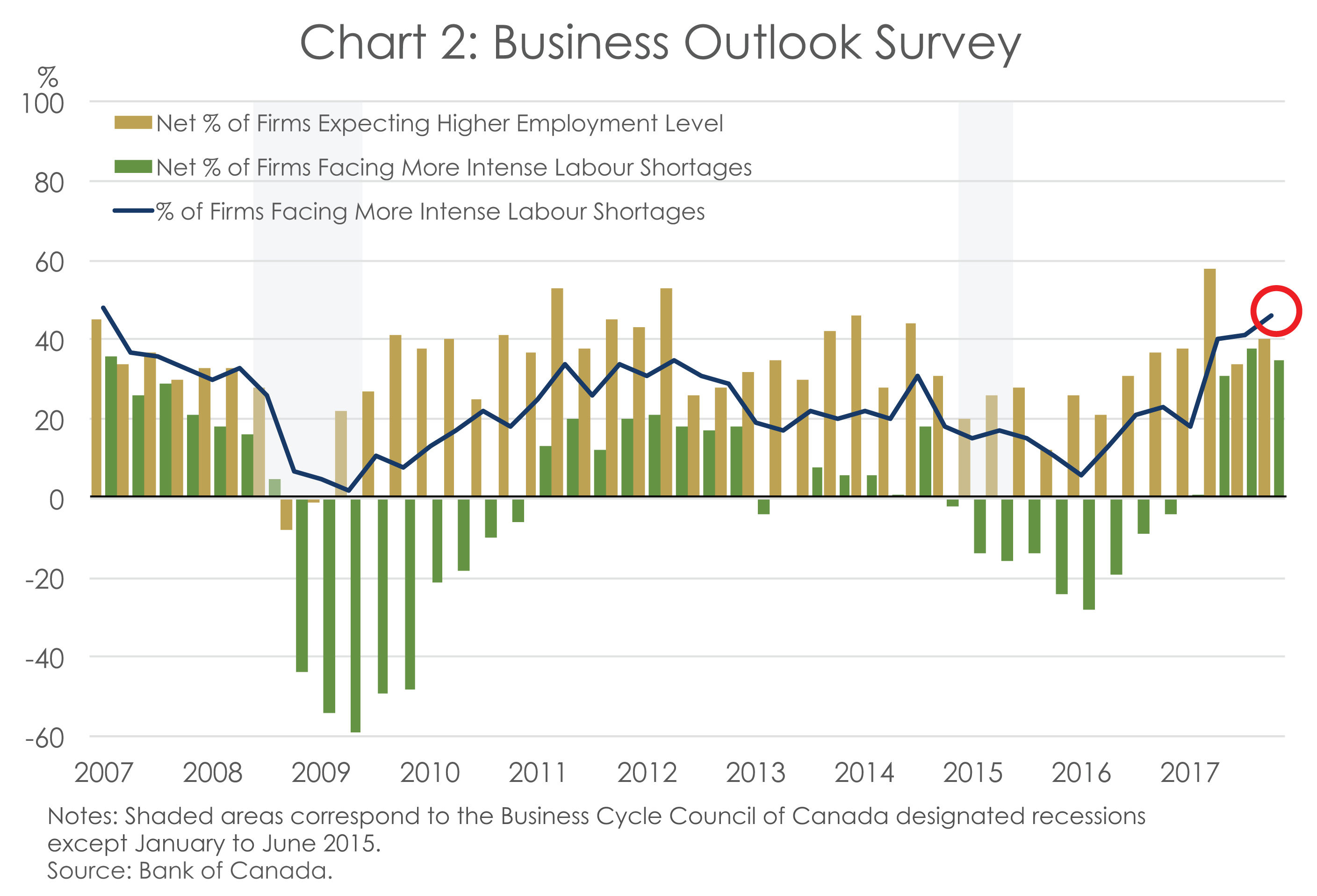
(Brief) Provincial Analysis
In November, the rate of outflows was largely influenced by the province of Québec, which saw its fastest pace of unemployment outflows on record in the last quarter (Chart 3). In Ontario and British Columbia, the recent trend in unemployment outflows has been similar to what is being observed at the national level (Chart 4 and 5). Although, a noticeable downward trend in the unemployment inflow rate was supportive of a lower overall unemployment rate in British Columbia in 2017 (Chart 5).
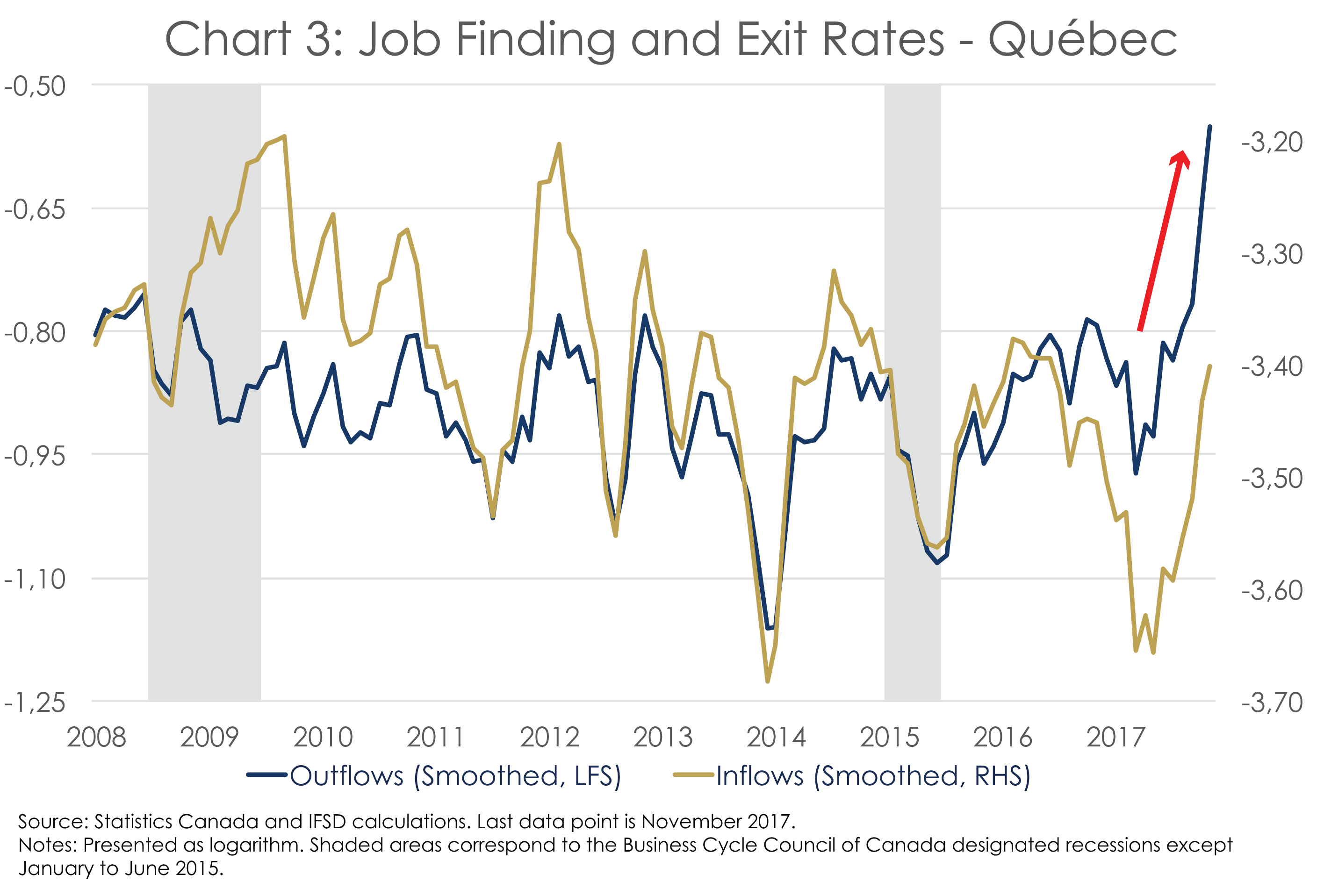
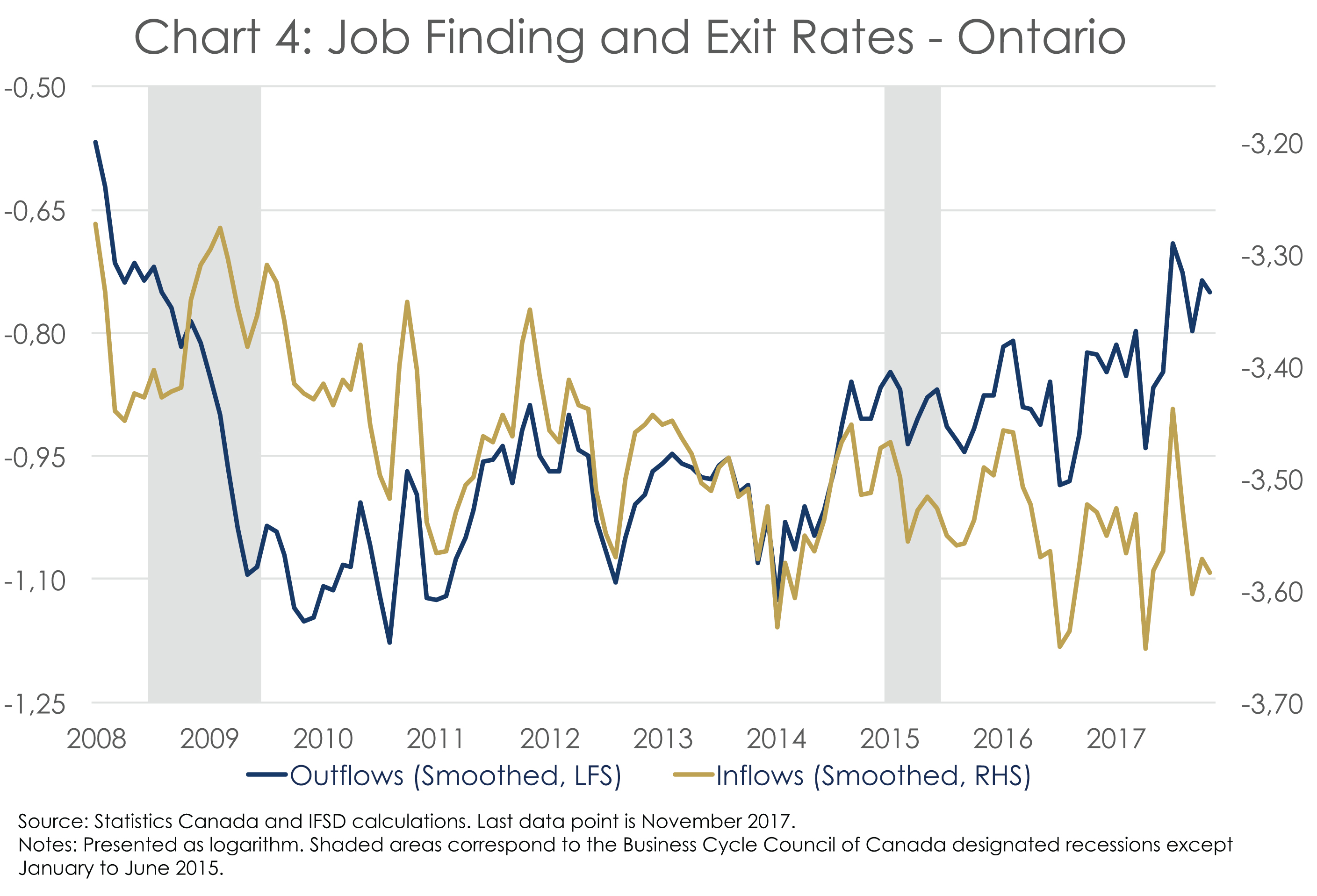
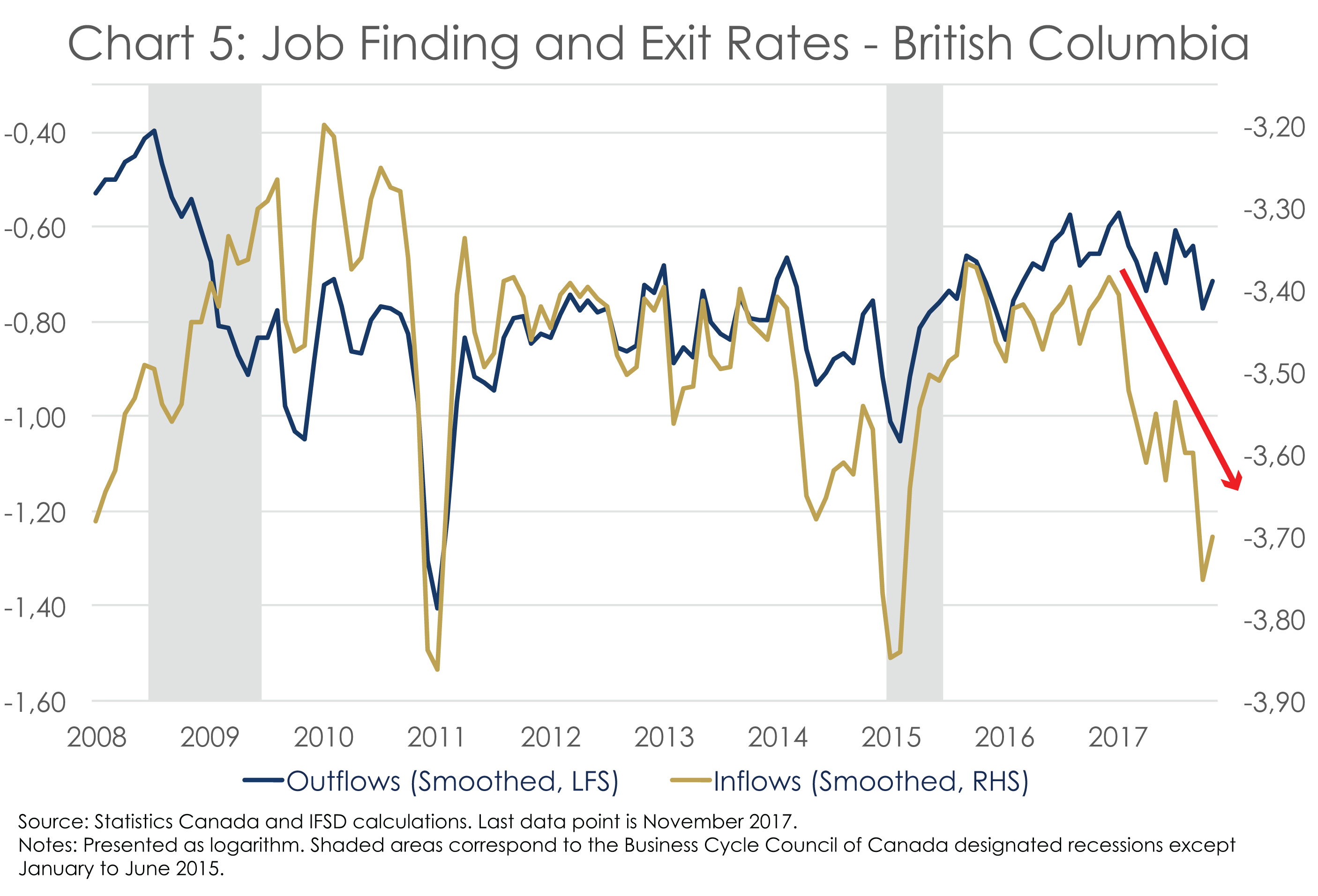
However, the story is very different in the energy-rich provinces. While the painful transition to lower energy prices following the oil crisis of 2015 is generally believed to be completed e.g. – investment in the oil and gas industries, after contracting 50% from around $20 billion in 2014, have stabilized around $10 billion in 2016 and 2017 (Chart 6) – the labour market hasn’t fully recovered yet. After years of over performing within Canada, Alberta and Saskatchewan must cope with unemployment rates that are higher than the national average (Chart 7). Some noticeable progress has been made in Alberta where the rate of unemployment went from 9% in November 2016 to 6.9% in December. In percentage point terms, this is twice the improvement seen at the national level. On the other hand, Saskatchewan only improved its unemployment rate by 0.4 percentage point over the same period. This explains the diverging trends in unemployment flows in that province (Chart 8 and 9).
